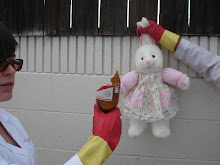Isostasy is a fancy word for something we are all familiar with. It is the kissing cousin of buoyancy. It is invoked to explain how we get so many different elevations around the globe.
Think of an iceberg. We all know that what we see above the water is a small percent of the total volume of ice. Let’s say we see 25% of the iceberg above the water. What happens as that iceberg melts? You loose ice, yes. The iceberg gets smaller, yes. But do you see any more than 25% of the iceberg above the water? No. You maintain the ratio of what is above the water to what is below the water even though the total volume of ice is less.

SIDE NOTE! We talked the other day about what’s going on inside the Earth (see: The tale of Alfred Wegener) and defined the Core, Mantle, and Crust. I should clarify that the difference between what is considered “Crust” and what is considered “Mantle” is a compositional difference. When you hear “Lithosphere” and “Asthenosphere” you are now distinguishing between a phase difference. Lithosphere is solid, Asthenosphere is viscous. You can have chunks of Mantle rocks in the Lithosphere, just as long as those chunks are solid. Everybody cool? Ok, moving on…
Say a mountain is our iceberg. A solid hunk floating around in the viscous Asthenosphere. We can make this mountain smaller by erosion. Erosion breaks down the rocks that comprise our mountain and carries the sediment away via streams, rivers, or wind. Our mountain getting smaller is kinda like our iceberg melting. Just like the iceberg, as our mountain gets smaller, we maintain the ratio of exposed crust to the “root” below it. This can work in the opposite fashion. Say we have a convergent plate boundary where two continental plates are colliding (like the Himalayas) and neither plate wants to subduct beneath the other. The crust has nowhere to go but up. This is how we end up with the tallest mountains in the world. But now you know from the principles of isostasy, those big-ass mountains are supported by a HUGE-ass root underneath. That’s a lot of rocks, folks!
Isostasy can lead to something interesting which is called Isostatic Rebound. Imagine that you are the continental crust during a glacial. You’re grumpy because big, heavy ice sheets have collected on top of you. You are a little depressed and kinda cold. That’s a lot of fucking ice on your back, but wait! Here comes an interglacial. Ahhh, finally. The ice is melting. All that weight is lifted. You stretch out, you bounce back. The continental crust rebounds when all that ice goes away. This happens in places like the Baltic Sea and around Hudson Bay. Scandinavia is uplifting as we speak because of this very process.
So that’s isostasy. Not the most exciting topic in the world, but important to understand none-the-less. The next time you’re in a pool, demonstrate Isostatic Rebound to your friends by holding a beach ball underwater and then letting go so that it pops them in the face. “Isostatic rebound theory, bitch!”











